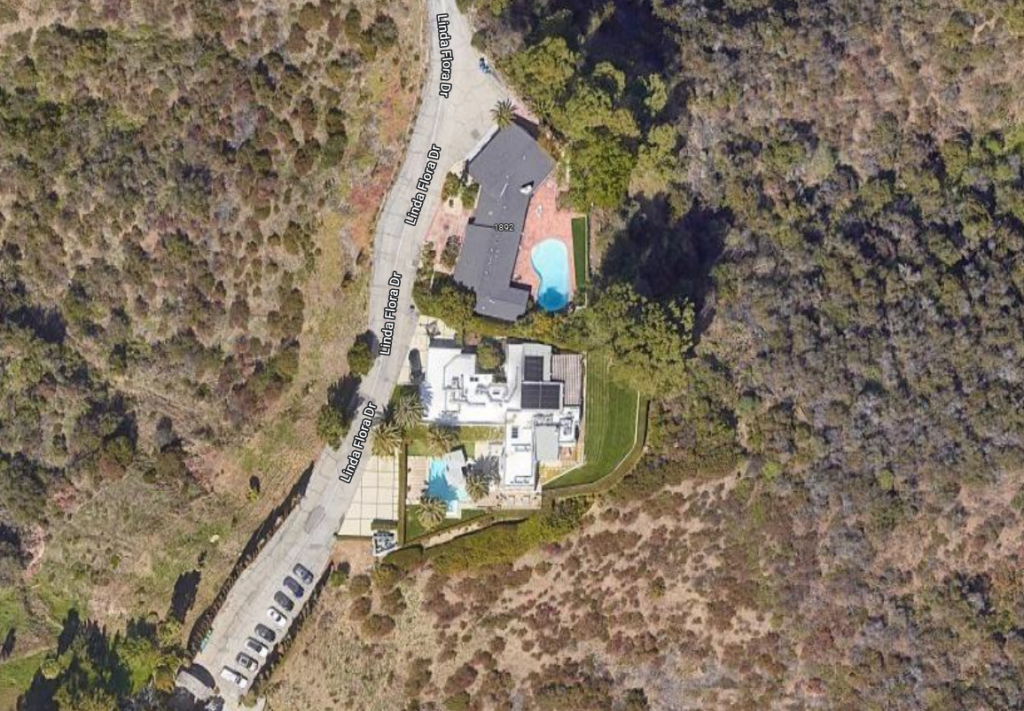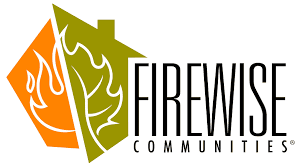Wildfire Response Service
PROTECT YOUR PROPERTY FROM WILDFIRES DURING AN ACTIVE WILDFIRE EVENT
Be Ready and Stay Ready
Protect your home or estate when you are on vacation, away for business, or even evacuated. The wildfires can reach many miles away with embers causing spot fires and exponentially growing, making time the most essential asset during an emergency.
If you live in a high fire severity zone, having a team to perform Wildfire Response Services can be the reason your property is left standing.
Our teams are on call 24/7 and ready to go when a wildfire is within miles of your community. We have certified retired firefighters with many years of experience in structure protection and wildland fire fighting.
Our services consist of removing any combustible materials away from your property, temporary covers on openings (if not already home-hardened) and treatment of your property with long-term fire retardant.
Our services consist of the following:
- We patrol your property and neighborhood, prepared to treat your structures and your vegetation.
- We will remove any combustible items away from the house, and cover any vents (temporary covers) on your structures if requested.
- We will pretreat structures with wildfire gel, as needed, and spray vegetation with PHOS-CHEK fire retardant, that is safe for your pets, your plants, and your home.
- We keep you informed as we receive radio communication from our wildfire experts.
- Access to your community or property is ultimately up to the incident commander. And why it’s important to get us involved as soon as you revive evacuation alerts.
- Evacuate sooner vs later. The environment can quickly become unstable and chaotic.
How to Start the Process
1. Schedule a Comprehensive Wildfire Risk Assessment
Our initial Fire Risk Assessment will include a full set of recommendations to protect your property from wildfires. Includes home hardening recommendations such as ember-restistant vents and treatment plan for long-term fire retardants.
2. Sign Up for the Wildfire Response Service
After you receive the Wildfire Risk Assessment's treatment plan, you can choose to sign up for our Wildfire Reponse Service so we can deploy quickly and treat the property during an active wildfire event.
3. Wildfire Response and Protection Team
Our Private Wildfire Response Team will be deployed in the event of a Wildfire near your property. We will prioritize your property and perform long-term fire retardant application and defensible space.
Wildfire Response Service Includes:
Application of Fire Retardant (PHOS-CHEK)
Our team will apply long-term fire retardant (the same fire retardant that is dropped from the air planes during a wildfire fight) around the most hazardous areas and around the vegetation to protect the home from ember-ignitions.
Creating Defensible Space
Recommendations on Defensible space is the buffer you create between your property and the wildland areas that surrounds it. This space is needed to slow or stop the spread of wildfire from embers and radiant heat. Proper defensible space also provides firefighters with a safe area to defend your home. This includes removing any flammable objects within 0-5 feet of the home such as wood, propane tanks, furniture etc.
Response Priority and VIP List
During an evacuation, there will be a large demand in long-term fire retardant and wildfire response services. By joining our Wildfire Response VIP List, your property will be on the top of the response priority and our crews will deploy first to those clients.
* Our team is certified to get through an evacuation order but is not guaranteed depending on the incident commander in charge and the situation. This also includes property that is close to, but not in evacuation zones so our team can deploy quickly and service the clients before evacuation hits.
General Descriptions for the Three Evacuation Levels and Necessary Actions by Residents:
Level 1
EVACUATION or PROTECTION ALERT: A wildfire threat is in your area. It would be wise to consider planning and/or packing, in the event an evacuation becomes necessary.
Level 2
EVACUATION WARNING or NOTICE: High probability of a need to evacuate.
You should prepare now by packing necessary items and preparing your family, pets, and vehicle for potential departure. Remember the 6- P’s:
1. A plan for the persons in your family (including a meeting place.)
2. Personal items (including toiletries, food and water for 2-3 days and special personal
possessions.)
3. Prescriptions- Have your full, current supply of prescriptions packed.
4. Photographs (and other mementos) which cannot be replaced.
5. Pets (Have a plan in place and pets secured so frightened pets don’t escape fenced yards or kennels.)
6. Papers- Pack all important papers, including reference phone numbers, account numbers, etc.
Now is the time to move persons with mobility or medical issues.
If you have livestock or large animals, please move them to a safe place now!
Please use common sense and evacuate at any time you feel uncomfortable or see active fire behavior.
Level 3
EVACUATION REQUEST or ORDER: Occupants of the affected area(s) are asked to leave within a specified time period, by pre-designated route(s). Perimeter roadblocks are typically established. At this stage:
You should take your family, pets, and necessary items including medications and important papers and evacuate now if you are in a Level III area.
Check in with your local Red Cross shelter (even if you don’t intend to stay there). Check in with them and let them know where you will be in case your family is looking for you.
Drive with your lights on, safely and SLOWLY remaining aware of your surroundings as you leave.
What is Long-Term Fire Retardant?
Long-term fire retardants contain retardant salts (usually fertilizers) that change the way fire burns, reducing fire intensity and limiting the spread of a fire even after the water in the retardants has evaporated. The goal of applying fire retardant to your property is to prevent the fire from getting close enough to your home.
With a combination of applying fire retardant along with home hardening solutions, the chances of your home surviving the wildfires increases significantly.
Small changes to your home can reduce wildfire risk by up to 40%, and structural and vegetation improvements combined can lower wildfire risk by up to 75%. Furthermore, losses prevented can be much bigger (e.g. 5 times greater) when compared to a highly flammable environment.
Our team of experts can conduct a risk assessment to ensure your property is held at the highest standard from CALFIRE and the NFPA.
Did you know most fires are started by embers miles away from the wildfire?
Most fires are actually started by wildfire embers casting miles away onto the property and landing onto vegetation or openings of the home like air vents. Once the embers get into the vents or vegetation, there is a high chance it will catch small contaminants on fire such as dust balls, mulch or dry leaves etc. This causes a chain reaction of materials to combust, causing the fire to ignite close to or within the home.
Small changes to your home can reduce wildfire risk by up to 40%, and structural and vegetation improvements combined can lower wildfire risk by up to 75%. Furthermore, losses prevented can be much bigger (e.g. 5 times greater) when compared to a highly flammable environment.
Our team of experts can conduct a risk assessment to ensure your property is held at the highest standard from CALFire and the NFPA.

Application of fire retardant
or removal of vegetation
Application of fire retardant
or removal of vegetation
Application of fire retardant
or removal of vegetation
Application of fire retardant
or removal of vegetation
See picture above for fire hazard and what can be done to prevent the fire from burning the home.
Schedule a Wildfire Risk Assessment
Frequently Asked Questions
Why is the Fire Retardant not pink like the ones dropped off airplanes?
The fire retardant we utilize is PHOS-CHEK, which is the same ones dropped off the airplanes without the pink dye. The pink dye is for the fire fighting teams to see and locate which areas have fire retardants applied. If it was clear, the fire team will have a hard time distinguishing which areas have fire retardants applied.
Is the Fire Retardant safe to use around vegetation?
Yes! The LTR is actually a fertilizer and safe to use around vegetation. The product has gone through strict testing protocols administered by the US Forest Service and is fully approved for use throughout the USA; it meets all performance, mammalian & fish toxicity, and environmental safety requirements
Where do you spray the Fire Retardant?
Depending on your property, generally we want to spray the first 0-30 feet (the intermediate zone) of your home. With larger properties with a lot of vegetation, we recommend vegetation management and additional application of fire retardants up to 100 feet of the property.
Is the Fire Retardant safe for children, animals and pets?
Yes! The LTR is non-hazardous and poses no risk to humans, vegetation or animals/pets.
Do you spray Fire Retardant onto the home itself?
We spray within the first 5 feet of the home onto any vegetation that may pose a threat. The home itself should be built with fire resistant material and other home hardening solutions like ember proof vent guards and gutter guards. We conduct a home risk assessment to provide you with the best plan of action all around.
Can I water my plants when fire retardant is applied?
We recommend drip hoses or drip lines to water the roots without washing off the retardants. Sprinklers and hand watering will reduce the effectiveness of the
long-term fire retardant prematurely. Caution should be exercised to not directly spray the foliage of treated vegetation; instead, watering only around the base of plants and soaker hoses will ensure true long-term protection from fire.
What is defensible space?
Defensible space is a buffer between your home and the vegetation that surrounds it. This helps to slow or stop the spread of wildfire and provides firefighters a safe area to defend your home.
What is home hardening?
Flying embers from a wildfire can destroy homes up to a mile away. Home hardening is the process of protecting openings and using ember-resistant materials such as fire-resistant vents, gutter guards and double pane window glass to increase the likelihood of survival when wildfire strikes.
Don't know where to start? Give us a call and we can assist quickly.



Contact Us
- 310-620-9442
- 3120 E. Garvey S. West Covina CA 91791
- 24 Hour Emergency Disaster Service
- NFPA Member
